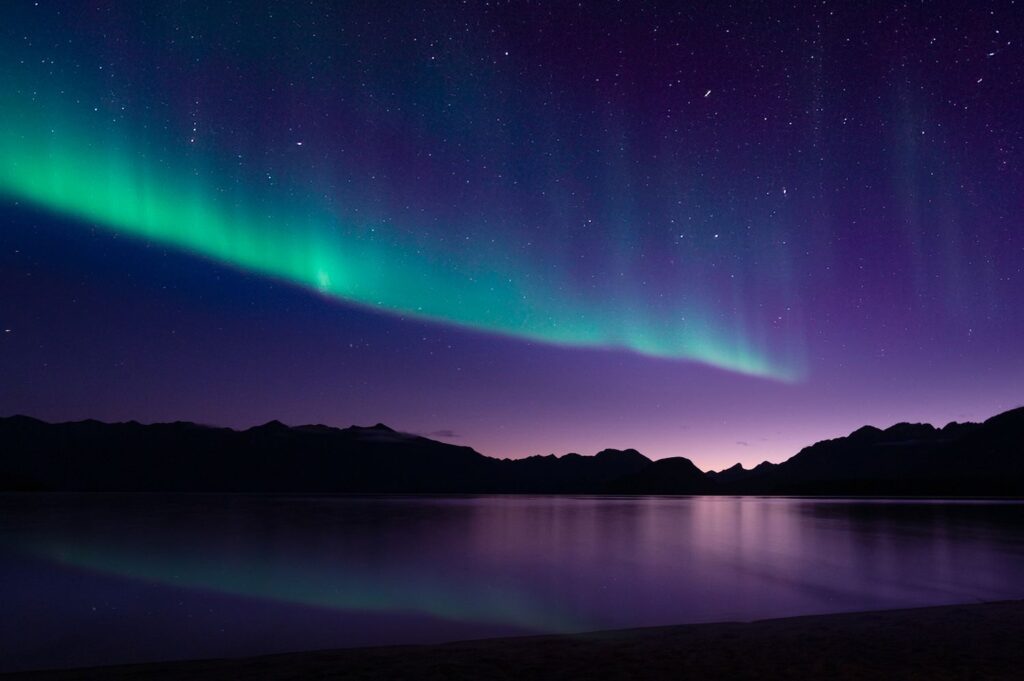While the northern lights often steal the spotlight, their southern counterpart—aurora australis—offers an equally dazzling display of its own. The sky is painted green, purple, or red. But catching a glance requires luck and latitude. The southern lights are also created by solar particles colliding against the Earth’s magnetic fields, as they do during solar storms.
The southern lights are notoriously harder to see than the northern lights. This is largely due to the fact that there is so little land around the South Pole from which to see it. Only a few remote places on Earth can experience this polar show.
You’ll want to be at a high latitude in the south, close to the South Pole magnetic field. For the best views of the southern lights, choose a location with low humidity, long dark nights, and a lack of light pollution. Antarctica, Tasmania and New Zealand can sometimes provide glimpses of these elusive lights. But Patagonia is the best place to see them, as it’s a mountainous region that spans south Argentina and Chile.
The Andes Mountains in Patagonia that act as the border between Argentina and Chile offer the ideal latitude to see the Southern Lights’ colorful dance. This is accompanied by spectacular viewing conditions. During the long, dark nights of the austral winter (May to August), the phenomenon is best visible. Amid Patagonia’s stark beauty and solitude, the southern lights often reveal themselves—quietly and brilliantly.
Most southern-lights-seekers come to Patagonia via Ushuaia, Argentina, which is sometimes called “the end of the world” and is part of the southernmost and least populated Argentine province. Ushuaia offers access to Tierra del Fuego National Park This is also a great place to see the lights.
With “noctourism”—the growing interest in after-dark travel experiences—emerging as one of 2025’s leading trends, many travelers are setting their sights on the aurora borealis. The prize is further south. According to Booking.com’s annual travel predictionsMore than half of American travellers are considering destinations that have darker skies to catch a cosmic show or stargaze.
In Patagonia, where the night stretches and the landscape remains blissfully unspoiled, the dream of rare nocturnal discovery feels closer—and infinitely more magical.


